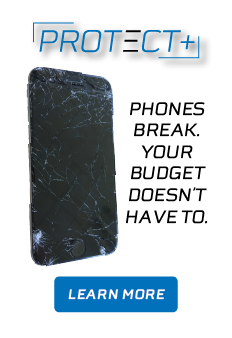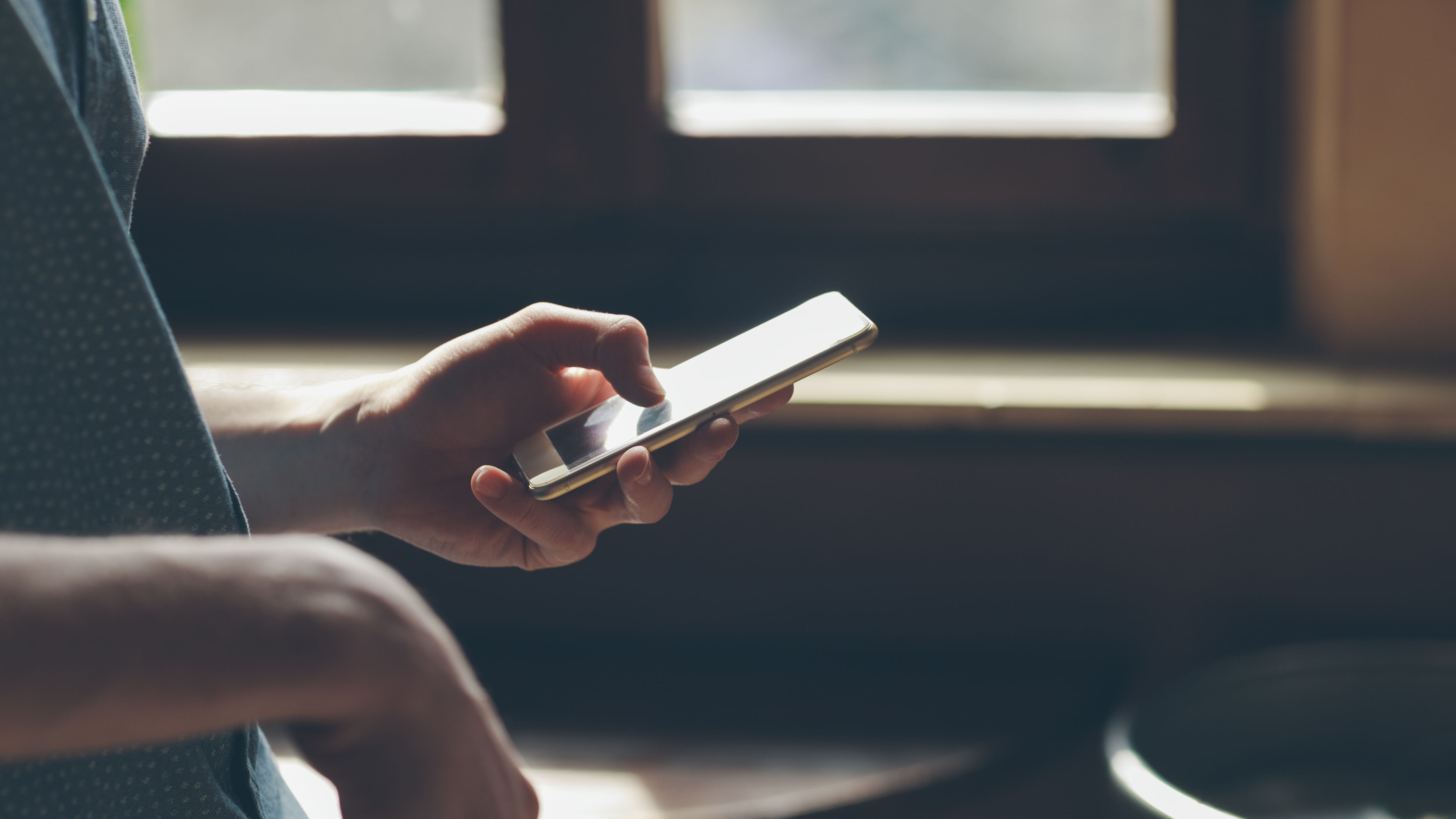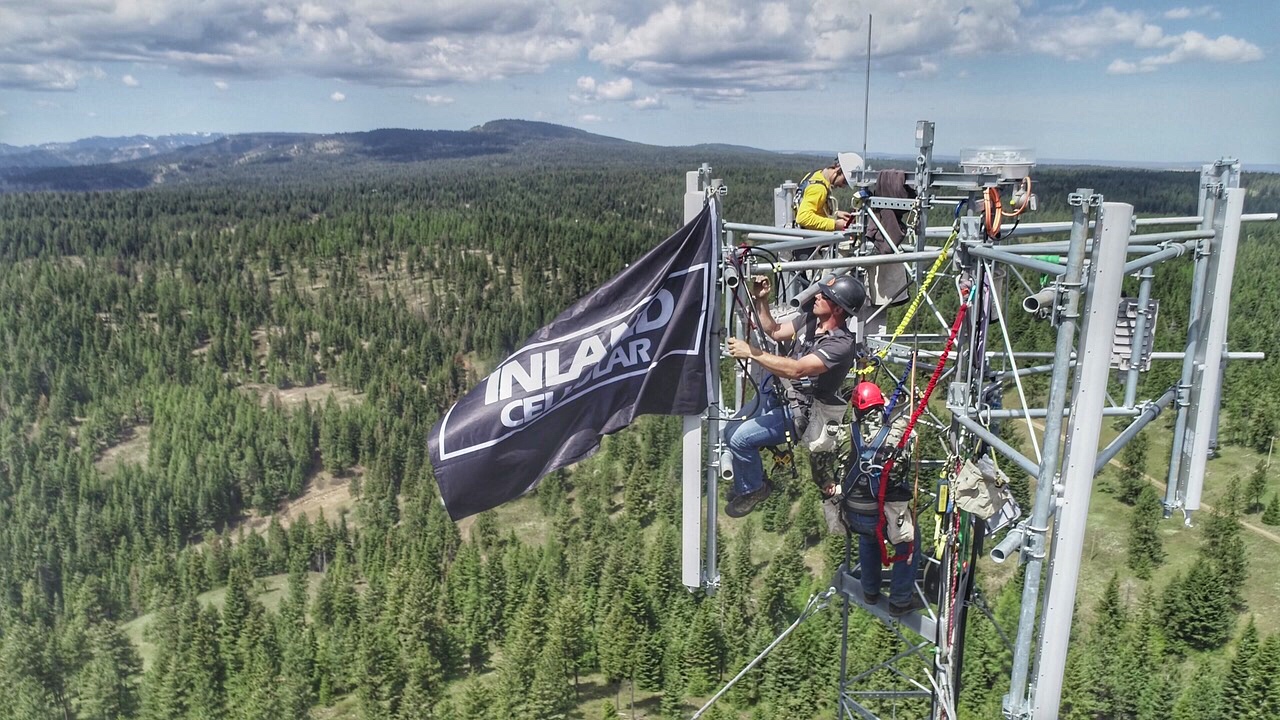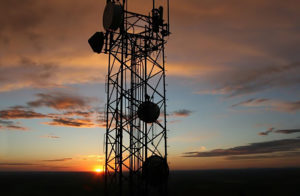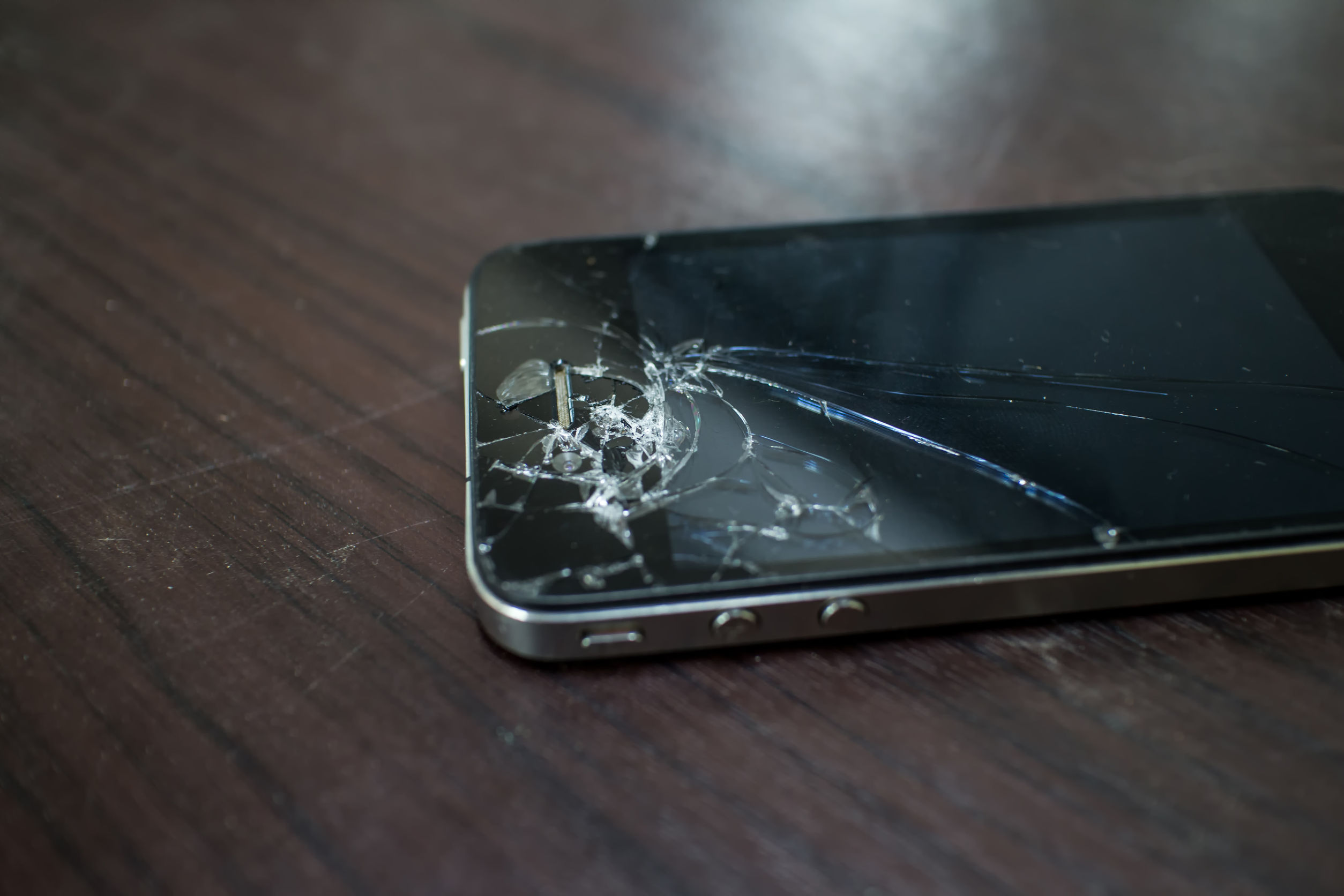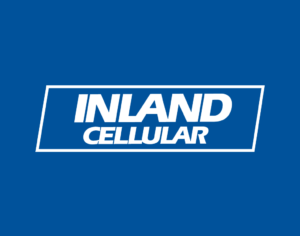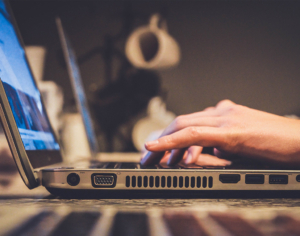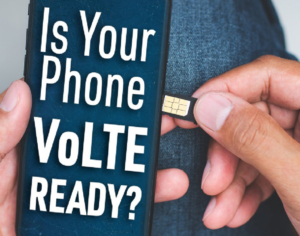Apps, Security & Backups
- For Android phones, yes! The easiest way to make sure your contacts are always backed up is to enter all new contacts as Gmail contacts. These contacts are automatically saved to your Gmail account online, and can be restored from there. You can also back up your contacts from the phone by opening the people or contact app, pushing the menu button, then import/export, then export to storage. A window will popup showing you where your contact list will be saved. Typically it saves to your SD card as 00001.vcf. That backup file can then be sent via email, cloud storage, or copied to your PC. Your contacts can be restored using the same method, only instead of choosing export to storage choose “import from storage”.
-
- This comes down to personal preference. Google puts in several barriers against any malware/viruses, which should stop most viruses in their tracks. As long as you install apps from verified sources, such as the Play Store or Amazon’s app store, you should be safe. Avoid installing 3rd party and untrusted apps. That’s usually where people get into trouble. If you want an extra layer of protection, then feel free to install an antivirus program from the Play Store.
What is the best anti-virus program?
- Again, this is personal preference. Avast, AVG, and Lookout are the most popular, plus they all have great reputations as PC security programs.
- With Android phones, Google has included a built in phone tracking function. The downside is that it needs to be enabled before it’s of any use. To enable this feature first go to menu, then settings, then Location access and enable your GPS and other location access features. Then open your app menu and click on Google Settings. Click on “Android Device Manger” at the bottom of the page and check the boxes for the features you’d like to use, in this case “Remotely locate this device”. You can now go to https://www.google.com/android/devicemanager, login with your Gmail account, and choose the device you’d like to locate from the drop down list. You can also remotely lock your device, change your device password, and completely erase your phone from this site, as long as data is working on your device.
- The easiest way to copy pictures from your phone is to connect your phone to your PC with the included USB cable. With some phones you need to enable “mass storage mode” while on newer phones you want to make sure “Media device (MTP)” or “media transfer protocol” is enabled. Please note that for some devices and computers you may need to download and install your phones drivers from the manufactures website. Once the phone is connected open “My Computer” and look for your device. Then browse to your picture folder (typically it’s the DCIM folder), then copy the pictures from there, and paste them into your picture folder on your computer.
- You can also backup your pictures using cloud storage apps such Google Drive, Dropbox, BItcasa, or Google+ to save your pictures online. These pictures can then be accessed and downloaded through the web browser on your computer.
- A widget is a part of an app that runs on one of your phones home screens, which shows info from an installed app. A shortcut is just an icon that opens another app, but a widget is used to display updated information from the main app.
- Think of apps like programs on a computer. They can be used to add functionality to your device, such as a flashlight or compass app, or they can be used for entertainment purpose, like games, movie and music apps. You can also use apps to customize you’re the look, feel and sounds on your device.
- While each Android browser has its own set of features and functions, they all exist for one reason- to let you browse the web. At this, they are all very similar. Chrome is the most popular browser and it’s included on newer versions of Android by default. Dolphin, Firefox, Skyfire, and Opera are also good choices.
Data Usage
- There are varieties of applications in the play store that monitor data usage like 3G Watchdog. Devices with Android 4.0 or greater have a built data monitoring application.
- The byte is a unit of digital information in computing and telecommunications that most commonly consists of eight bits.
- The kilobyte for 1000 bytes kB or Kilobyte for 1024 bytes (symbol: KB or KiB or informally KBytes) are two definitions for multiples of the unit byte for digital information.
- The megabyte (symbol MB, sometimes abbreviated as Mbyte) is a multiple of the unit byte for digital information storage or transmission with three different values depending on context: 1048576 bytes (220) generally for computer memory; one million bytes (106, see prefix mega- generally for computer storage or transmission rates;[ and in rare cases 1000×1024 (1024000) bytes.
- The gigabyte is a multiple of the unit byte for digital information storage. The prefix giga means 109 in the International System of Units (SI), therefore in this context 1 gigabyte is 1000000000bytes. The unit symbol for the gigabyte is GB.
- Mobile data provides wireless users with IP capability using the cellular network for Internet applications such as web access, file transfer, and email.
- Your phone is using data anytime your devices 1X/3G icon is active. Mobile devices have a variety services that use data including the web browser, email client and applications (Facebook, Twitter and Instagram).
Email & Gmail
- Yes, you can setup multiple email accounts on your smartphone.
- No, you do not. However, without a Gmail account you cannot install any apps from the Play Store and will miss out on the best reasons to own a smartphone in the first place.
- No, we do not store your Gmail login and password.
- You can recovery you Gmail account from here https://www.google.com/accounts/recovery/. You can do it from your phone, but it’s easier from a computer. Keep in mind you can only recover your account if you set up some recovery options to begin with.
- This depends on your email provider and what type of mail they have. The best/easiest way to do this is to set up your email as a Microsoft Exchange or corporate mail account. This will sync your contacts, calendar, email and, on some phones, your tasks and text messages, with your exchange server and Outlook for exchange. If your email provider only offers IMAP or POP email, then you will need a 3rd party program to sync your contacts and calendar from Outlook to your phone. One Media Hub and Companionlink can both be used for this purpose.
Messaging
- Yes, you need to call customer support. Just dial 611 from your mobile. If you are the account holder you can pay a fee to receive SMS records from your account.
- Not all devices are capable of group messaging please refer to the owner’s manual to see if your device is capable of group messaging. If your device is capable of group messaging please make sure you enable the feature in the messaging settings of your device.
- The easiest way save your text messages to email, is to forward the message to an email address. Just enter the email address in the (To: Field) where you normally enter the phone number.
Music, Pictures & Transfers
- The easiest way to copy pictures from your phone is to connect your phone to your PC with the included USB cable. With some phones you need to enable “mass storage mode” while on newer phones you want to make sure “Media device (MTP)” or “media transfer protocol” is enabled. Please note that for some devices and computers you may need to download and install your phones drivers from the manufactures website. Once the phone is connected open “My Computer” and look for your device. Then browse to your picture folder (typically it’s the DCIM folder), then copy the pictures from there, and paste them into your picture folder on your computer.
- You can also backup your pictures using cloud storage apps such Google Drive, Dropbox, BItcasa, or Google+ to save your pictures online. These pictures can then be accessed and downloaded through the web browser on your computer.
- There are many different ways to get music on your Android phone. Our Infusion music subscription app can be used to get all the music you want. You can also purchase high quality MP3s from IC Music, which can be transferred from your phone to your computer and other devices.
- The easiest way to copy your current music to your phone is to connect your phone to your PC with the included USB cable. With some phones you need to enable “mass storage mode” while on newer phones you want to make sure “Media device (MTP)” or “media transfer protocol” is enabled. Please note that with some devices and computers you may need to download and install your phones drivers from the manufacturer’s website. Once the phone is connected open “My Computer” and look for your device. Next, browse to the folder on your computer where your MP3 files are saved, then copy the music from there, and paste it onto your phones memory card.
- You can also use 3rd party programs and apps to listen to your music on your phone. Google’s Music Manger can be used to scan and match your purchased iTunes collection and will put the music into your Google music account automatically (assuming the music can be found in the Google Play Store). You can then stream the music to your phone, or make music available offline on your phone via the Google Play Music app. More info can be found here.
- DoubleTwist will sync your MP3 collection, along with other files, to and from your device. It’s compatible with both Windows and Macs.
- On feature phones videos can be sent using MMS.
- On Android phones smaller videos can be sent using MMS or email. Here’s an example of how to send an MMS. If you’re in close proximity to the person you’d like to send to, and if your device has the required components, videos can be sent using Wi-Fi direct, Bluetooth, or Android/Samsung beam. Click here to see how to use Samsung beam. There are also apps in the market that can be used for the same thing such as Bump , Superbeam or Fast File Transfer. To share larger video files with someone that isn’t standing next to you, you can use cloud sharing apps such Google Drive, Drop Box, BItcasa, or Send it Pro (note that the pro version is required to send larger files).
Phone Use/ Troubleshooting
- No, it not necessary to dial the country code when calling a number in the United States.
- No, this is not necessary with new batteries and devices.
- On most Android phones you need to push on the green phone and slide in the direction indicated on the screen to answer the call. Simply pushing the green answer button does not always answer the call.
- For Calling
- We don’t currently have a way to block a specific number from calling you on the system level. If you are in an Android phone there are several apps that will allow you block specific callers. Check out Mr. Number, Call Blocker, and Call Control Call Blocker for more info.
- For Texting
- If you subscribe to our IC Pro TXT feature you can block specific numbers from texting you from this page. If you’re in an Android device the call blocker apps above can also be used to block text messages.
- From your device, dial *72, the number you want to forward your calls too, and then hit send. You will hear a couple beeps. Your calls will now forward instantly to the number you entered. To disable call forwarding dial *73 from your phone and hit send.
- Your clock should automatically update when it reads the new time from a tower. If this is not working properly go to menu, settings, Date & Time and verify that “Automatic date & time” and “Automatic time zone” are both checked. You may also need to power cycle your device. In some cases you may need to make a call before the clock updates on your device.
- On most phones, you can push and hold on the message and then select “save attachment” from the popup menu. Click here to see our video tutorial.
- This can vary from device to device, but normally you just need to click on the screen and slide your figure from side to side.
- This all depends on the chargers and phones being used. Some home chargers charge faster than car chargers, some car chargers charge faster than home chargers. Some phones regulate charging so that they charge the same no matter what charger is used.
Everything you do on your phone impacts battery life. The more you use it, the faster your phone will die. You can help maximize battery life by disabling things you’re not using such as Wi-Fi, Bluetooth, GPS, and NFC. You can also increase battery life by shortening your screen timeout time and lowering the screen brightness in the menu/settings/display settings menu. You can save more battery life by disabling 3G data but remember that none of your apps that require data will function properly without any data enabled. It’s also important to remember that every device has different battery life based on the size of the battery and the version of software on the device. Here’s a video tutorial showing how to enable/disable different features.
Repair
- No not for warranty repairs we send them back to the OEM. If a device is out of warranty we do some basic repairs in the office like software re-flashes, speaker replacement and some screen replacements.
- Yes and no, it is device dependent and if replacement screens are available. This service is not available in all store locations.
- Average repair time is 6-8 weeks.
Voicemail
- You can check your voicemail by dialing your phone number, and then enter your passcode when prompted.
- This functionality varies greatly from device to device. Some devices do not support passcodes to be programmed. Please call customer support at 611 from your mobile phone to see if your device supports this functionality.
Simply follow these steps:
- Dial your number from your mobile
- You will be asked to enter your password
- Enter “6426” (default pass code)
Follow the tutorial instructions; there will be three things to set up:
- Your customer greeting
- Your name
- Your custom pass code (4-10 digits)
- Please call customer service at 611 from your mobile they will be able to tell you your voicemail passcode.
Why do I have to re-enter my passcode when I’m roaming?
Bills & Usage
There are no fees for making a payment over the phone. We accept VISA, MasterCard, AmExpress and Discover card payments. We cannot accept check by phone.
Visit our Online Billing page by clicking here.
Rate plan changes do not affect your contract.
We bill for service one month in advance. Therefore on the next bill following a plan change, you will be credited for the old plan from last month and charged for the new plan for both last month and current month.
In order to comply with changes to the FCC regulations, telephone and wireless carriers are required to adopt additional safeguards to protect against unauthorized access to customers personal information.
There may be equipment that was billed to the account and/or pro-rations of your monthly service applied to the first bill
Contract
Customers are not required to have a contract.
Contract buyouts are pro-rated based on the months left on the contract. Normally a premium smartphone buyout is $20 per month for every month left on the contract, a standard smartphone buyout is $12.50 per month and non-smartphones are $7.50 per month.
Please contact a customer support specialist at 1.800.248.8822 for full contract buyout details that are specific to your device and account.
You will have an option to either buy out of your current contract or purchase another phone for its retail price
FCC Booster Registration
No. The FCC has established special rules for Consumer Signal Boosters to make sure they are simple to install and use, and don’t interfere with wireless networks. Inland Cellular customers can only purchase and install signal boosters that are designated for consumer use. “Industrial Use” boosters require an FCC license and special installation, and unauthorized use of these boosters could result in severe penalties.
Yes, Inland Cellular does sell consumer signal boosters; however, you are not required to purchase a booster from us in order to register it.
Yes, you need to register your new signal booster in one of our stores or at www.inlandcellular.com/support/services/boosters/.Registering your booster is important to ensure you are in compliance with the new FCC rules, and it allows Inland Cellular to locate problematic boosters in the event of interference so that we can maintain our network’s reliability.
Yes, you need to re-register the booster. The date of operation will be a key indicator used to determine the most recent location.
Yes, Inland Cellular requires that you register each booster that is operated on the network.
Most FCC-certified signal boosters will be available by April 30, 2014. Inland Cellular is allowing the use of properly certified consumer signal boosters on its network, as long as it is registered with us, functioning properly, and not causing interference on our cellular network or with the service of others around you. For one of the new signal boosters to operate properly on the Inland Cellular network, it must be FCC-certified and have labeling that instructs the consumer to register it before use. Look for a label like this:
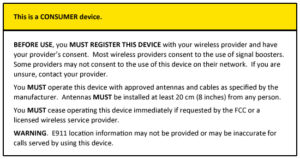
IMPORTANT: Not all FCC-certified signal boosters will work on the Inland Cellular network. Inland Cellular’s network operates on specific frequencies licensed by the FCC, and the signal booster must be compatible with those frequencies to enhance coverage. It is the responsibility of the consumer to ensure that the booster is compatible with the Inland Cellular network and if not purchased from Inland Cellular, to troubleshoot any operational issues directly with the booster manufacturer.
You may purchase a booster from Inland Cellular or from another source.
No, there is no fee to register or use a signal booster.
The following information will be required for the registration:
- Name of booster owner and/or operator (include both if different individuals)
- Inland Cellular cell number
- Booster location address (where it will be operated)
- Date of booster’s initial operation
- Booster manufacturer, model number, serial number and FCC ID label
Signal boosters are devices that can help cell phone users improve their coverage in areas where they do not get a good signal. For example, signal boosters can be placed in homes or cars to provide increased signal strength for cell phones, which may let the user complete a call in areas where they previously couldn’t. When these devices are properly installed, they can help consumers, wireless service providers, and public safety first responders by extending cell phone coverage to areas that would otherwise have weak signals.
Although signal boosters can improve cell phone coverage, malfunctioning, poorly designed, or improperly installed signal boosters can interfere with wireless networks and cause interference to a range of calls, including emergency and 911 calls. The Federal Communications Commission (FCC) recently adopted new rules for wireless signal boosters that go into full effect March 1, 2014. These new rules require consumers to: 1. Obtain their wireless carrier’s approval before operating a signal booster. 2. Register their devices with their wireless carrier. With these changes, Inland Cellular will now allow the use of FCC-certified consumer signal boosters on our network. A simple registration site has been set up on Inland Cellular’s website to allow customers to register their devices: www.inlandcellular.com/support/services/boosters/
The new FCC rules prohibit signal booster users from causing interference to wireless networks, so the registration information is used in case interference is detected. You may be contacted by Inland Cellular or the FCC in case interference issues are seen and in extreme cases, you may be asked to turn off the booster.
A “fixed” booster is one that stays in one location, such as in your home, office or other stationary location. A “mobile” booster would be used in a moving vehicle like a car, boat or recreational vehicle.
Hearing Aid Compatibility
What are HAC ratings?
HAC ratings let you know which phones are most likely to work with a hearing aid. The larger the number the better, there are two ratings:
- M-Ratings: Wireless devices rated M3 or M4 meet FCC requirements and are likely to generate less interference to hearing devices than wireless devices that are not labeled. M4 is the better/higher of the two ratings.
- T-Ratings: Wireless devices rated T3 or T4 meet FCC requirements and are likely to be more usable with a hearing device’s telecoil (“T Switch” or “Telephone Switch”) than unrated wireless devices. T4 is the better/higher of the two ratings. (Note that not all hearing devices have telecoils in them).
For more information go to: http://www.accesswireless.org/Disability-Categories/Hearing.aspx
Where can I find HAC ratings?
https://inlandcellular.com/accessibility/
These phones have been tested and rated for use with hearing aids for some of the wireless technologies that they use. However, there may be some newer wireless technologies used in a phone that have not been tested yet for use with hearing aids. It is important to try the different features of a phone thoroughly and in different locations, using your hearing aid or cochlear implant, to determine if you hear any interfering noise. Consult your service provider or the manufacturer of the phone for information on hearing aid compatibility. If you have questions about return or exchange policies, consult your service provider or phone retailer.
Basic Tech Rating – Basic voice and text messaging capabilities
Mid Tech Rating – Media capable, text messaging, touch screen
High Tech Rating – Smart phones, data capable, e-mail capable
Use the following links for more information:
https://www.fcc.gov/hearing-aid-compatibility-wireless-telephones.
All of the phones we sell have the HAC ratings on the box. Also, our website lists the HAC ratings under the specs for each device. Or, you can contact us and we’ll be glad to provide HAC info.
If a phone is rated M4/T4 is it guaranteed to work with my hearing aid?
Not necessarily. It is best to try the phone with your hearing aid. You can come into any of our phones for a demo before you buy.
Location, Hours & Staffing
We always welcome resumes. You can check out our job openings and submit your resume here
Business Office
Monday – Friday: 8-6
Saturday: 9-5
1332 G St
Lewiston, Idaho 83501
208.798.0245
STORE LOCATIONS
Lewiston
Monday – Friday: 8-6
Saturday: 9-5
2612 Nez Perce Drive
Lewiston, ID 83501
Phone: (208) 798-0245 | (800) 248-8822
Moscow
Monday – Friday: 8-6
Saturday: 10-3
960 West Pullman Road
Moscow, ID 83843
Phone: (208) 882-4994 | (800) 248-8822
Orofino
Monday – Friday: 9-6
Closed Saturday
204 Johnson Ave.
Orofino, ID 83544
Phone: (208) 827-0225 | (800) 248-8822
Grangeville
Monday – Friday: 9-6
Closed Saturday
126 East Main, Suite 2
Grangeville, ID 83530
Phone: (208) 983-0160 | (800) 248-8822
Dayton
Monday – Friday: 8-5
Closed Saturday
151 E. Main St.
Dayton, WA 99328
Phone: (509) 629-0789 | (800) 248-8822
College Place
Monday – Friday: 8-6
Saturday: 10-3
1605 SE Meadowbrook Blvd. Ste. 7
College Place, WA 99324
Phone: (509) 527-0516 | (800) 248-8822
Moses Lake
Monday – Friday: 8-6
Saturdays: 10-3
1035 Stratford Road Suite H
Moses Lake, WA 98837
Phone: (509) 765-6670 | (800) 248-8822
*Agents are not open on Saturday
Please call 800-248-8822, or email us at: cellinfo@inlandcellular.com
Lewiston, ID 2612 Nez Perce Dr, Suite A
Moscow, ID 960 W Pullman Rd
Grangeville, ID 126 East Main St, Suite #2
Orofino, ID 125 Johnson Ave, Suite #2
Dayton, WA 151 E Main St
Walla Walla, WA 1605 SE Meadowbrook Blvd, Suite #7
Moses Lake, WA 1035 N Stratford Rd, Suite H
Plans
Yes, any Inland Cellular phone.
Yes, we have varying discounts dependent on work place
Access our Data Calculator
Roaming
- You will be travelling to other countries, we have a solution. You may need to use a different phone (we’ll help you with that) that is compatible with the networks around the world. Go here for more info or contact us.
- Yes! You can use your phone nationwide, in most areas. You do not need a special phone or rate plan to use your phone nationwide. There may be an additional fee on some rate plans. Also, you will want to have the latest PRL (Preferred Roaming List). If you are unsure what rate plan or PRL you have, please ask!
- Most of our current and recent rate plans include nationwide roaming for no additional cost. However, our ‘Home Only’ plan and many of our older rate plans did not include roaming. If you are unsure if your plan includes nationwide roaming, please ask!
- In order to provide nationwide coverage, we have partnered with all the major CDMA carriers, such as Verizon, Sprint, US Cellular, and many others. Depending on the area you are in and other factors, you could be using any of our roaming partners.
- Our Home Service Area is the area in which we are licensed to provide cellular service. This is in the general areas of southeastern Washington and north central Idaho. Please see our map for more details.
- Roaming occurs when you are using another carrier’s towers other than Inland Cellular. This will happen when you are outside of our Home Service Area. Your phone will indicate that you are roaming (indicator varies by device, but may be a triangle (∆) or the letter R at the top of your screen).
Bills & Usage
There are no fees for making a payment over the phone. We accept VISA, MasterCard, AmExpress and Discover card payments. We cannot accept check by phone.
Visit our Online Billing page by clicking here.
Rate plan changes do not affect your contract.
We bill for service one month in advance. Therefore on the next bill following a plan change, you will be credited for the old plan from last month and charged for the new plan for both last month and current month.
In order to comply with changes to the FCC regulations, telephone and wireless carriers are required to adopt additional safeguards to protect against unauthorized access to customers personal information.
There may be equipment that was billed to the account and/or pro-rations of your monthly service applied to the first bill
Contract
Customers are not required to have a contract.
Contract buyouts are pro-rated based on the months left on the contract. Normally a premium smartphone buyout is $20 per month for every month left on the contract, a standard smartphone buyout is $12.50 per month and non-smartphones are $7.50 per month.
Please contact a customer support specialist at 1.800.248.8822 for full contract buyout details that are specific to your device and account.
You will have an option to either buy out of your current contract or purchase another phone for its retail price
FCC Booster Registration
No. The FCC has established special rules for Consumer Signal Boosters to make sure they are simple to install and use, and don’t interfere with wireless networks. Inland Cellular customers can only purchase and install signal boosters that are designated for consumer use. “Industrial Use” boosters require an FCC license and special installation, and unauthorized use of these boosters could result in severe penalties.
Yes, Inland Cellular does sell consumer signal boosters; however, you are not required to purchase a booster from us in order to register it.
Yes, you need to register your new signal booster in one of our stores or at www.inlandcellular.com/support/services/boosters/.Registering your booster is important to ensure you are in compliance with the new FCC rules, and it allows Inland Cellular to locate problematic boosters in the event of interference so that we can maintain our network’s reliability.
Yes, you need to re-register the booster. The date of operation will be a key indicator used to determine the most recent location.
Yes, Inland Cellular requires that you register each booster that is operated on the network.
Most FCC-certified signal boosters will be available by April 30, 2014. Inland Cellular is allowing the use of properly certified consumer signal boosters on its network, as long as it is registered with us, functioning properly, and not causing interference on our cellular network or with the service of others around you. For one of the new signal boosters to operate properly on the Inland Cellular network, it must be FCC-certified and have labeling that instructs the consumer to register it before use. Look for a label like this:

IMPORTANT: Not all FCC-certified signal boosters will work on the Inland Cellular network. Inland Cellular’s network operates on specific frequencies licensed by the FCC, and the signal booster must be compatible with those frequencies to enhance coverage. It is the responsibility of the consumer to ensure that the booster is compatible with the Inland Cellular network and if not purchased from Inland Cellular, to troubleshoot any operational issues directly with the booster manufacturer.
You may purchase a booster from Inland Cellular or from another source.
No, there is no fee to register or use a signal booster.
The following information will be required for the registration:
- Name of booster owner and/or operator (include both if different individuals)
- Inland Cellular cell number
- Booster location address (where it will be operated)
- Date of booster’s initial operation
- Booster manufacturer, model number, serial number and FCC ID label
Signal boosters are devices that can help cell phone users improve their coverage in areas where they do not get a good signal. For example, signal boosters can be placed in homes or cars to provide increased signal strength for cell phones, which may let the user complete a call in areas where they previously couldn’t. When these devices are properly installed, they can help consumers, wireless service providers, and public safety first responders by extending cell phone coverage to areas that would otherwise have weak signals.
Although signal boosters can improve cell phone coverage, malfunctioning, poorly designed, or improperly installed signal boosters can interfere with wireless networks and cause interference to a range of calls, including emergency and 911 calls. The Federal Communications Commission (FCC) recently adopted new rules for wireless signal boosters that go into full effect March 1, 2014. These new rules require consumers to: 1. Obtain their wireless carrier’s approval before operating a signal booster. 2. Register their devices with their wireless carrier. With these changes, Inland Cellular will now allow the use of FCC-certified consumer signal boosters on our network. A simple registration site has been set up on Inland Cellular’s website to allow customers to register their devices: www.inlandcellular.com/support/services/boosters/
The new FCC rules prohibit signal booster users from causing interference to wireless networks, so the registration information is used in case interference is detected. You may be contacted by Inland Cellular or the FCC in case interference issues are seen and in extreme cases, you may be asked to turn off the booster.
A “fixed” booster is one that stays in one location, such as in your home, office or other stationary location. A “mobile” booster would be used in a moving vehicle like a car, boat or recreational vehicle.
Hearing Aid Compatibility
What are HAC ratings?
HAC ratings let you know which phones are most likely to work with a hearing aid. The larger the number the better, there are two ratings:
- M-Ratings: Wireless devices rated M3 or M4 meet FCC requirements and are likely to generate less interference to hearing devices than wireless devices that are not labeled. M4 is the better/higher of the two ratings.
- T-Ratings: Wireless devices rated T3 or T4 meet FCC requirements and are likely to be more usable with a hearing device’s telecoil (“T Switch” or “Telephone Switch”) than unrated wireless devices. T4 is the better/higher of the two ratings. (Note that not all hearing devices have telecoils in them).
For more information go to: http://www.accesswireless.org/Disability-Categories/Hearing.aspx
Where can I find HAC ratings?
| Make / Model | HAC Rating | Feature Level |
| Apple 5c | M3/T4 | High |
| Apple 5s | M3/T4 | High |
| Apple 6 | M3/T4 | High |
| Apple 6 Plus | M3/T4 | High |
| Apple 6s | M3/T4 | High |
| Apple 6s Plus | M3/T4 | High |
| Apple 7 | M3/T4 | High |
| Apple 7 Plus | M3/T4 | High |
| BlackBerry 9350 | M4/T3 | High |
| Coolpad 5560 | M3/T3 | High |
| Kyocera E4510 | M4/T4 | Mid |
| LG 270 Exchange | M4/T3 | Mid |
| LG 272 | M4/T4 | Mid |
| LG 991 | M3/T3 | High |
| LG 992 | M3/T3 | High |
| LG 995 | M4/T4 | High |
| LG AN170 | M4/T4 | Mid |
| Motorola XT1031 | M3/T4 | High |
| Motorola XT1050 | M3/T3 | High |
| Motorola XT1093 | M4/T3 | High |
| Motorola XT1575 | M4/T4 | High |
| Motorola XT1607 | M3/T3 | High |
| Samsung G530 | M4/T4 | High |
| Samsung G900 | M4/T4 | High |
| Samsung G920 | M4/T3 | High |
| Samsung G925 | M4/T3 | High |
| Samsung G930 | M4/T3 | High |
| Samsung G935 | M4/T3 | High |
| Samsung N920 | M4/T3 | High |
| Samsung R480 | M4/T3 | Mid |
| Sonim XP4400 | M4/T4 | Basic |
These phones have been tested and rated for use with hearing aids for some of the wireless technologies that they use. However, there may be some newer wireless technologies used in a phone that have not been tested yet for use with hearing aids. It is important to try the different features of a phone thoroughly and in different locations, using your hearing aid or cochlear implant, to determine if you hear any interfering noise.
Please contact Inland Cellular or the manufacturer of the phone for additional information on hearing aid compatibility. If you have questions about Inland Cellular's return or exchange policies you can review them by clicking here or give us a call.
Basic Tech Rating – Basic voice and text messaging capabilities
Mid Tech Rating – Media capable, text messaging, touch screen
High Tech Rating – Smartphones, data-capable, e-mail capable
All of the phones we sell have the HAC ratings on the box. Also, our website lists the HAC ratings under the specs for each device. Or, you can contact us and we’ll be glad to provide HAC info.
If a phone is rated M4/T4 is it guaranteed to work with my hearing aid?
Not necessarily. It is best to try the phone with your hearing aid. You can come into any of our phones for a demo before you buy.
Location, Hours & Staffing
We always welcome resumes. You can check out our job openings and submit your resume here
Business Office
Monday – Friday: 8-6
Saturday: 9-5
1332 G St
Lewiston, Idaho 83501
208.798.0245
STORE LOCATIONS
Lewiston
Monday – Friday: 8-6
Saturday: 9-5
2612 Nez Perce Drive
Lewiston, ID 83501
Phone: (208) 798-0245 | (800) 248-8822
Moscow
Monday – Friday: 8-6
Saturday: 10-3
960 West Pullman Road
Moscow, ID 83843
Phone: (208) 882-4994 | (800) 248-8822
Orofino
Monday – Friday: 9-6
Closed Saturday
204 Johnson Ave.
Orofino, ID 83544
Phone: (208) 827-0225 | (800) 248-8822
Grangeville
Monday – Friday: 9-6
Closed Saturday
126 East Main, Suite 2
Grangeville, ID 83530
Phone: (208) 983-0160 | (800) 248-8822
Dayton
Monday – Friday: 8-5
Closed Saturday
151 E. Main St.
Dayton, WA 99328
Phone: (509) 629-0789 | (800) 248-8822
College Place
Monday – Friday: 8-6
Saturday: 10-3
1605 SE Meadowbrook Blvd. Ste. 7
College Place, WA 99324
Phone: (509) 527-0516 | (800) 248-8822
Moses Lake
Monday – Friday: 8-6
Saturdays: 10-3
1035 Stratford Road Suite H
Moses Lake, WA 98837
Phone: (509) 765-6670 | (800) 248-8822
*Agents are not open on Saturday
Please call 800-248-8822, or email us at: cellinfo@inlandcellular.com
Lewiston, ID 2612 Nez Perce Dr, Suite A
Moscow, ID 960 W Pullman Rd
Grangeville, ID 126 East Main St, Suite #2
Orofino, ID 125 Johnson Ave, Suite #2
Dayton, WA 151 E Main St
Walla Walla, WA 1605 SE Meadowbrook Blvd, Suite #7
Moses Lake, WA 1035 N Stratford Rd, Suite H
Plans
Yes, any Inland Cellular phone.
Yes, we have varying discounts dependent on work place
Access our Data Calculator
Roaming
- You will be travelling to other countries, we have a solution. You may need to use a different phone (we’ll help you with that) that is compatible with the networks around the world. Go here for more info or contact us.
- Yes! You can use your phone nationwide, in most areas. You do not need a special phone or rate plan to use your phone nationwide. There may be an additional fee on some rate plans. Also, you will want to have the latest PRL (Preferred Roaming List). If you are unsure what rate plan or PRL you have, please ask!
- Most of our current and recent rate plans include nationwide roaming for no additional cost. However, our ‘Home Only’ plan and many of our older rate plans did not include roaming. If you are unsure if your plan includes nationwide roaming, please ask!
- In order to provide nationwide coverage, we have partnered with all the major CDMA carriers, such as Verizon, Sprint, US Cellular, and many others. Depending on the area you are in and other factors, you could be using any of our roaming partners.
- Our Home Service Area is the area in which we are licensed to provide cellular service. This is in the general areas of southeastern Washington and north central Idaho. Please see our map for more details.
- Roaming occurs when you are using another carrier’s towers other than Inland Cellular. This will happen when you are outside of our Home Service Area. Your phone will indicate that you are roaming (indicator varies by device, but may be a triangle (∆) or the letter R at the top of your screen).
Android
- No, this is not necessary with new batteries and devices.
- On most Android phones you need to push on the green phone and slide in the direction indicated on the screen to answer the call. Simply pushing the green answer button does not always answer the call.
- You can check your voicemail by dialing your phone number, and then enter your passcode when prompted.
- The easiest way to copy pictures from your phone is to connect your phone to your PC with the included USB cable. With some phones you need to enable “mass storage mode” while on newer phones you want to make sure “Media device (MTP)” or “media transfer protocol” is enabled. Please note that for some devices and computers you may need to download and install your phones drivers from the manufactures website. Once the phone is connected open “My Computer” and look for your device. Then browse to your picture folder (typically it’s the DCIM folder), then copy the pictures from there, and paste them into your picture folder on your computer.
- You can also backup your pictures using cloud storage apps such Google Drive, Dropbox, BItcasa, or Google+ to save your pictures online. These pictures can then be accessed and downloaded through the web browser on your computer.
- There are many different ways to get music on your Android phone. Our Infusion music subscription app can be used to get all the music you want. You can also purchase high quality MP3s from IC Music, which can be transferred from your phone to your computer and other devices.
- The easiest way to copy your current music to your phone is to connect your phone to your PC with the included USB cable. With some phones you need to enable “mass storage mode” while on newer phones you want to make sure “Media device (MTP)” or “media transfer protocol” is enabled. Please note that with some devices and computers you may need to download and install your phones drivers from the manufacturer’s website. Once the phone is connected open “My Computer” and look for your device. Next, browse to the folder on your computer where your MP3 files are saved, then copy the music from there, and paste it onto your phones memory card.
- You can also use 3rd party programs and apps to listen to your music on your phone. Google’s Music Manger can be used to scan and match your purchased iTunes collection and will put the music into your Google music account automatically (assuming the music can be found in the Google Play Store). You can then stream the music to your phone, or make music available offline on your phone via the Google Play Music app. More info can be found here.
- DoubleTwist will sync your MP3 collection, along with other files, to and from your device. It’s compatible with both Windows and Macs.
- Your clock should automatically update when it reads the new time from a tower. If this is not working properly go to menu, settings, Date & Time and verify that “Automatic date & time” and “Automatic time zone” are both checked. You may also need to power cycle your device. In some cases you may need to make a call before the clock updates on your device.
- On feature phones videos can be sent using MMS.
- On Android phones smaller videos can be sent using MMS or email. Here’s an example of how to send an MMS. If you’re in close proximity to the person you’d like to send to, and if your device has the required components, videos can be sent using Wi-Fi direct, Bluetooth, or Android/Samsung beam. Click here to see how to use Samsung beam. There are also apps in the market that can be used for the same thing such as Bump , Superbeam or Fast File Transfer. To share larger video files with someone that isn’t standing next to you, you can use cloud sharing apps such Google Drive, Drop Box, BItcasa, or Send it Pro (note that the pro version is required to send larger files).
- This can vary from device to device, but normally you just need to click on the screen and slide your figure from side to side.
Android versions 2.3 (Gingerbread) and higher are supported.
- This all depends on the chargers and phones being used. Some home chargers charge faster than car chargers, some car chargers charge faster than home chargers. Some phones regulate charging so that they charge the same no matter what charger is used.
Everything you do on your phone impacts battery life. The more you use it, the faster your phone will die. You can help maximize battery life by disabling things you’re not using such as Wi-Fi, Bluetooth, GPS, and NFC. You can also increase battery life by shortening your screen timeout time and lowering the screen brightness in the menu/settings/display settings menu. You can save more battery life by disabling 3G data but remember that none of your apps that require data will function properly without any data enabled. It’s also important to remember that every device has different battery life based on the size of the battery and the version of software on the device. Here’s a video tutorial showing how to enable/disable different features.

